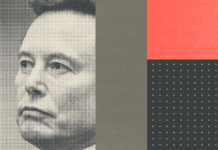In the late 1970s, Robert Hazard had a problem. He’d been tooling around Philadelphia’s music scene for more than a decade, trying out any sound that might put him on the map, to no avail. Then, in 1981, he finally recorded a demo of catchy new wave songs, which his manager passed along to an influential radio DJ. The songs went into heavy rotation and Hazard’s shows started selling out, attracting the attention of Kurt Loder—who gave him an appearance in Rolling Stone.
RCA signed Hazard to multi-album deal and redistributed his self-financed, self-produced 1982 EP. Glowing reviews propelled the single “Escalator of Life” onto Billboard’s Hot 100 chart, locked in MTV airplay, and led to sales of more than 300,000 copies. Two years later, Hazard’s first LP failed to meet sales projections and his label dropped him. He died in 2008, largely an unknown. Two months after he died, Spotify’s app launched; if it had been around when Hazard peaked, his career might’ve looked much different.
In the late 1980s, signings and firings became the norm as business-minded labels sought to reduce risk and maximize profit. In the ’90s, the industry embraced CDs, which cost less to manufacture and sold at higher price points than vinyl, but failed to see the coming impact of peer-to-peer file sharing networks and new systems for digital music storage and playback. Downloading digital music brought in only a fraction of the money made on physical media. From 1999 to 2009, sales of recorded music tumbled, from $14.6 billion to a mere $6.3 billion.
Over the past decade, the industry has experienced a surprising rebound thanks to the breakneck growth of music streaming services. The Recording Industry Association of America reports 80 percent of industry revenue now comes from streaming, and the number of paid subscriptions has surpassed 60 million. Following four consecutive years of double-digit growth, total year-end revenues are expected to break the $10 billion mark this year, inching ever closer to the sales numbers the industry hit during the glory days of CDs.
With all that money back on the table, record labels are scouting new talent again. But this time around, they’re hedging their bets with real-time metrics. Every day, millions of bits of data are tracked across Spotify, Pandora, and Apple Music, in addition to sources such as YouTube and RadioWave. Aggregators like Chartmetric and Soundcharts provide stakeholders with a comprehensive overview of an artist’s radio airplay, streaming playlist adds and positions, social media engagement, and geolocated listener demographics.







